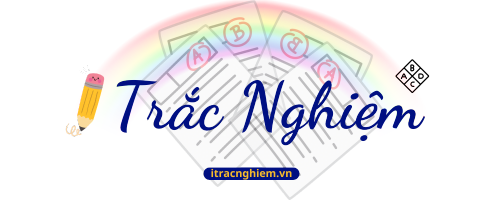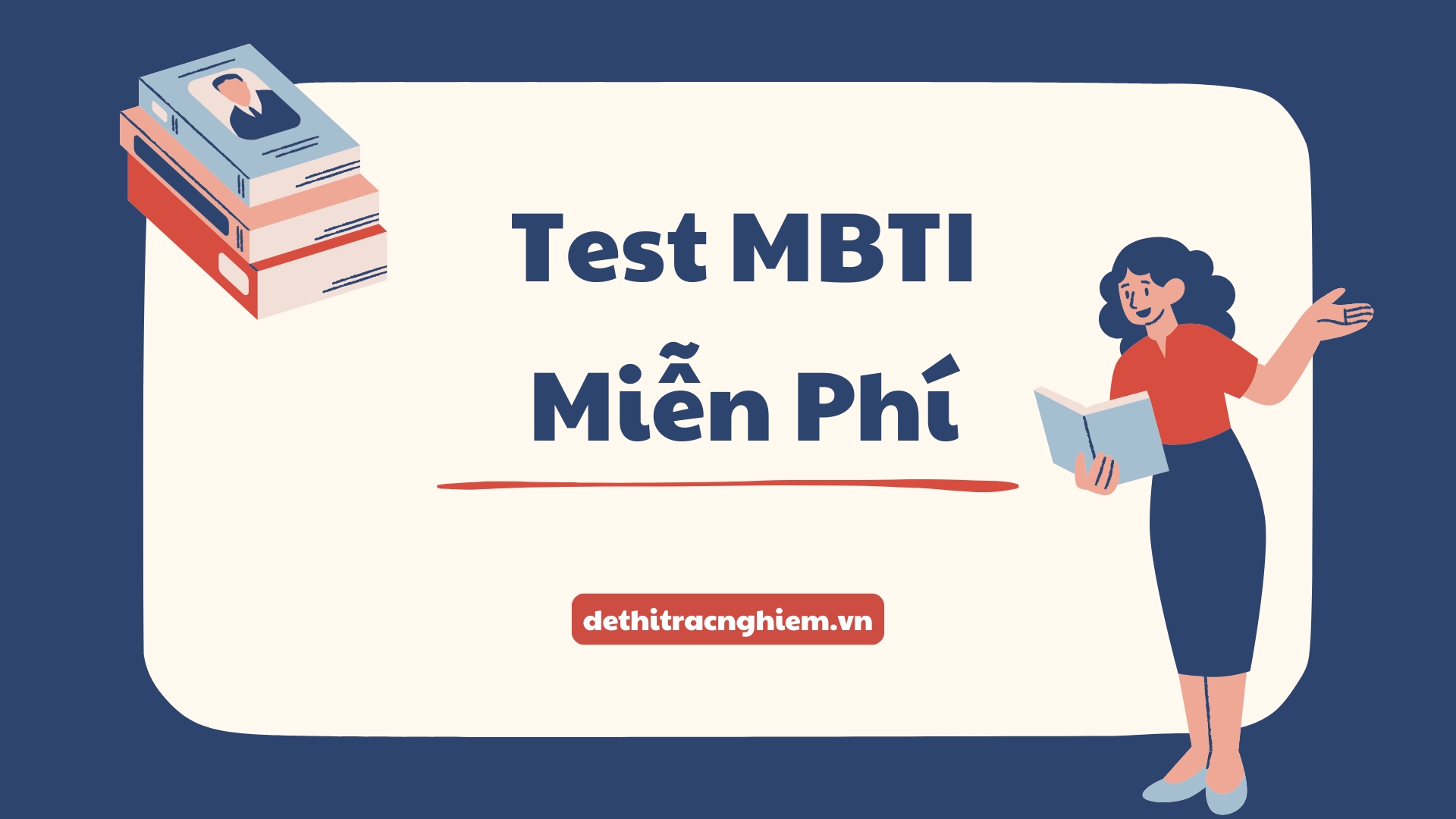Trắc nghiệm Tiếng Anh 10: Unit 8 Writing là một trong những đề thi thuộc Unit 8 – New Ways to Learn trong chương trình Tiếng Anh lớp 10. Phần viết trong unit này giúp học sinh rèn luyện khả năng diễn đạt ý tưởng, trình bày quan điểm cá nhân và lập luận logic về các phương pháp học tập hiện đại, đặc biệt là việc ứng dụng công nghệ trong giáo dục.
Trong bài Trắc nghiệm Tiếng Anh 10 Unit 8 Writing, học sinh có thể được yêu cầu viết đoạn văn nêu quan điểm, so sánh giữa học truyền thống và học trực tuyến, hoặc viết về lợi ích của việc sử dụng thiết bị thông minh trong học tập. Các cấu trúc ngữ pháp trọng tâm cần nắm bao gồm:
- Câu điều kiện (loại 1 và loại 2) để nêu tình huống và hệ quả,
- Câu bị động để mô tả cách công nghệ được sử dụng,
- To-infinitive và V-ing để trình bày mục đích và sở thích học tập,
- Liên từ logic như moreover, in contrast, however, therefore để kết nối ý rõ ràng.
Bố cục bài viết cần đủ ba phần: mở bài – thân bài – kết luận, trình bày mạch lạc và đúng chính tả.
Hãy cùng Dethitracnghiem.vn cùng tìm hiểu về đề thi này và tham gia làm kiểm tra ngay lập tức!
Trắc nghiệm Tiếng Anh 10 Unit 8 Writing
Câu 1: Mark the letter A, B, C, or D to indicate the sentence that is closest in meaning to each of the first sentence: Unlike traditional learning, the e-learning is flexible for the students as well as for the teachers.
A. The e-learning is more flexible for the students and the teachers than traditional learning.
B. The students’ e-learning is more flexible than the teachers’ traditional learning.
C. The e-learning for the students is more flexible than traditional learning for the teachers.
D. The students use more flexible e-learning than traditional learning used by the teachers.
Câu 2: Mark the letter A, B, C, or D to indicate the sentence that is closest in meaning to each of the first sentence: Some school districts have seen great improvements by allowing digital devices in the classroom.
A. Allowing digital devices in classroom, some school districts have seen great improvements.
B. Digital devices used in classroom help some school districts see great improvements.
C. Great improvements in digital devices have been seen in the classroom at some school districts.
D. Some school districts have allowed digital devices in the classroom to see great improvements.
Câu 3: Mark the letter A, B, C, or D to indicate the sentence that is closest in meaning to each of the first sentence: Some conservative educators are concerned with the tablet being a major distraction.
A. Some conservative educators do not like the tablet because it is a major distraction.
B. Some conservative educators do not approve of using the tablet as it is a major distraction.
C. The tablet is considered a major distraction by some conservative educators.
D. The tablet being a major distraction is of concern to some conservative educators.
Câu 4: Mark the letter A, B, C, or D to indicate the sentence that is closest in meaning to each of the first sentence: Textbooks can’t provide students with the latest information as a mobile device can.
A. Textbooks do not provide students with information later than can a mobile device.
B. The information provided by textbooks is not later than that provided by a mobile device.
C. Textbooks can’t provide students with as new information as a mobile device can.
D. The information provided by textbooks is newer than that provided by a mobile device.
Câu 5: Mark the letter A, B, C, or D to indicate the sentence that is closest in meaning to each of the first sentence: By allowing mobile devices in school, educators help students expand learning outside of the classroom.
A. Allowed to use mobile devices in school, students are also able to expand their learning outside of the classroom.
B. Educators helped students expand their learning outside of the classroom by allowing mobile devices in school.
C. To help students expand their learning outside the classroom, educators allowed using mobile devices in schools.
D. Allowing the use of mobile device in school is the best way of expanding students’ learning outside the classroom.
Câu 6: Mark the letter A, B, C, or D to indicate the sentence that best combines each pair of sentences given: The influence of technology in classroom is spreading to a mass number of students. The students have started adopting the new methods of technology in their studies.
A. The students who have started adopting the new methods of technology in their studies influence a mass number of other students in the classroom.
B. The influence of technology in classroom is spreading to a mass number of students who have started adopting the new methods of technology in their studies.
C. Having been influenced by the technology in classroom, a mass number of students started adopting the new methods of technology in their studies.
D. Starting to adopt the new methods of technology in their studies, a mass number of students have spread the influence of technology in classroom.
Câu 7: Mark the letter A, B, C, or D to indicate the sentence that best combines each pair of sentences given: Now teachers are making continuous efforts to make the classroom a good place to learn and succeed. They are aiming towards making the education attractive and sensible.
A. Now teachers who are aiming towards making the education attractive and sensible are making continuous efforts to make the classroom a good place to learn and succeed.
B. Making continuous efforts to make the classroom a good place to learn and succeed, teachers are now aiming towards making the education attractive and sensible.
C. As now teachers are making continuous efforts to make the classroom a good place to learn and succeed, they are aiming towards making the education attractive and sensible.
D. Now teachers are making continuous efforts to make the classroom a good place to learn and succeed so that they are aiming towards making the education attractive and sensible.
Câu 8: Mark the letter A, B, C, or D to indicate the sentence that best combines each pair of sentences given: The digital learning opportunities make students self-reliant. The students can study without the teachers.
A. The digital learning opportunities make students self-reliant because they can study without the teachers.
B. The digital learning opportunities make students study without the teachers and become self-reliant.
C. The students can study without the teachers because the digital learning opportunities have made them self-reliant.
D. Being able to study without the teachers, the students are more self-reliant thanks to the digital learning opportunities.
Câu 9: Mark the letter A, B, C, or D to indicate the sentence that best combines each pair of sentences given: Digital learning is making the students self-confident and independent. The students are now able to structure their own learning program.
A. Digital learning can help students structure their own learning program to make them self-confident and independent.
B. To be able to structure their own learning program, students must learn to be self-confident and independence digitally.
C. Digital learning is making the students self-confident and independent, so they are now able to structure their own learning program.
D. To become more self-confident and independent, students acquire digital learning to be able to structure their own learning program.
Câu 10: Mark the letter A, B, C, or D to indicate the sentence that best combines each pair of sentences given: Tablets give users the ability to highlight, edit text and write notes. Yet, this does not ruin a textbook for the next user.
A. Tablets give users the ability to highlight, edit text and write notes without ruining a textbook for the next user.
B. Tablets neither give users the ability to highlight, edit text and take notes, nor does it ruin a textbook for the next user.
C. If tablets did not give users the ability to highlight, edit text and write notes, they would ruin the textbook for the next user.
D. Tablets give users the ability to highlight, edit text, and write notes so that the next user can read without ruining the text.
Câu 11: Mark the letter A, B, C, or D to indicate the sentence that is closest in meaning to each of the first sentence: I had never seen such a beautiful painting before.
A. It’s the most beautiful painting, but I’ve seen a lot.
B. The painting was not beautiful at all.
C. This is the most beautiful painting I have ever seen.
D. I didn’t see the painting.
Câu 12: Mark the letter A, B, C, or D to indicate the sentence that is closest in meaning to each of the first sentence: He started learning English five years ago.
A. He used to learn English five years ago.
B. He is learning English and hasn’t stopped.
C. He has been learning English for five years.
D. He stopped learning English five years ago.
Câu 13: Mark the letter A, B, C, or D to indicate the sentence that is closest in meaning to each of the first sentence: Although it rained heavily, they still went to school.
A. Because it rained heavily, they didn’t go to school.
B. They didn’t go to school despite the heavy rain.
C. In spite of the heavy rain, they still went to school.
D. Because it rained heavily, they went to school.
Câu 14: Mark the letter A, B, C, or D to indicate the sentence that is closest in meaning to each of the first sentence: She is so intelligent that she can solve any problem.
A. She isn’t intelligent enough to solve any problem.
B. She is intelligent, and she is unable to solve any problem.
C. She is so intelligent that no problem can resist her.
D. Because she can solve any problem, she is not intelligent.
Câu 15: Mark the letter A, B, C, or D to indicate the sentence that is closest in meaning to each of the first sentence: I last saw him five years ago.
A. I have seen him for five years.
B. I haven’t seen him for five years.
C. I didn’t see him for five years.
D. I last saw him five years before.
Câu 16: Mark the letter A, B, C, or D to indicate the sentence that best combines each pair of sentences given: He spent a lot of money on the project. The project was unsuccessful.
A. Because he spent a lot of money on the project, it was successful.
B. Despite spending a lot of money on the project, it was unsuccessful.
C. The project was successful as a result of him spending a lot of money on it.
D. He didn’t spend a lot of money on the project, so it was unsuccessful.
Câu 17: Mark the letter A, B, C, or D to indicate the sentence that best combines each pair of sentences given: You study hard. You will pass the exam.
A. You will pass the exam unless you study hard.
B. You won’t pass the exam because you study hard.
C. If you study hard, you will pass the exam.
D. You study hard, yet you will not pass the exam.
Câu 18: Mark the letter A, B, C, or D to indicate the sentence that best combines each pair of sentences given: She is beautiful. I don’t like her.
A. Although she is beautiful, I don’t like her.
B. Because she is beautiful, I don’t like her.
C. She is beautiful, so I don’t like her.
D. She is not beautiful and I like her.
Câu 19: Mark the letter A, B, C, or D to indicate the sentence that best combines each pair of sentences given: He is rich. He is still unhappy.
A. He is rich, so he is unhappy.
B. He is rich, and he is also unhappy.
C. Despite being rich, he is still unhappy.
D. He is rich because he is unhappy.
Câu 20: Mark the letter A, B, C, or D to indicate the sentence that best combines each pair of sentences given: You must study hard. You want to get good grades.
A. Although you want to get good grades, you don’t have to study hard.
B. You want to get good grades, but you don’t need to study hard.
C. You must study hard if you want to get good grades.
D. You may not study hard and you will get good grades.




